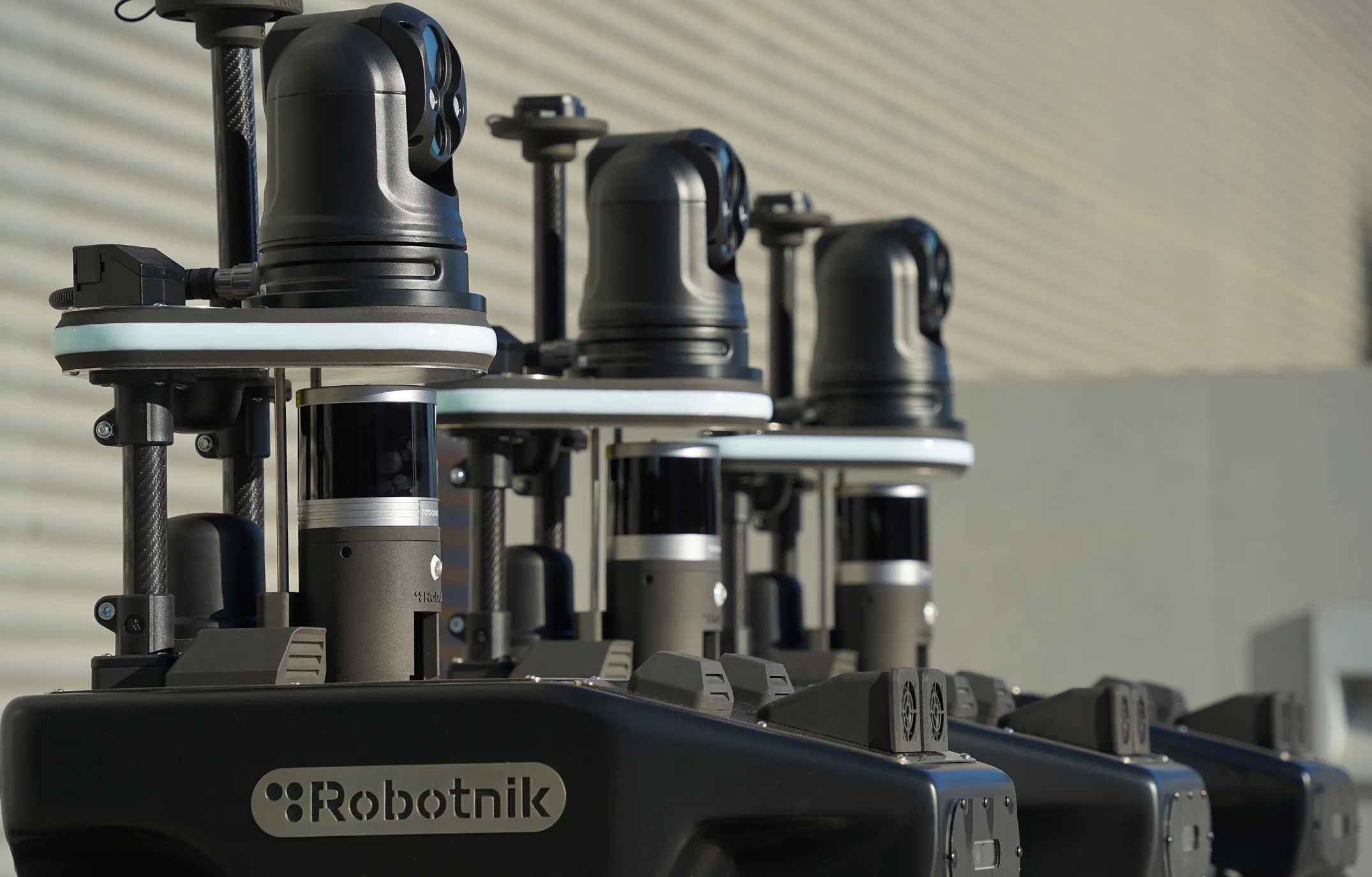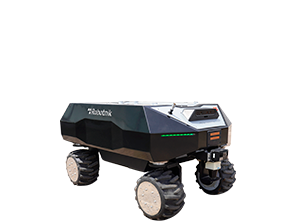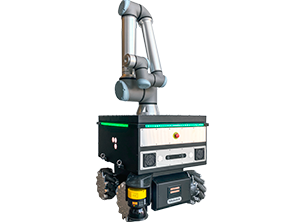The inspection and maintenance of critical infrastructure presents some of the most complex challenges in the industrial world. In energy-related areas such as oil and gas refineries, electrical substations, or thermoelectric plants, the risks are not abstract—one failure can lead to severe environmental consequences, injuries to personnel, or significant financial losses. Autonomous mobile robotics has become a highly valuable tool for improving safety and operational stability in these sectors.
Compared to traditional inspection methods, robotic thermal inspections are gaining momentum thanks to their ability to detect thermal anomalies, gas leaks, or malfunctions in electrical equipment.
WHAT ARE ROBOTIC THERMAL INSPECTIONS FOR?
Robotic thermal inspections are automated processes in which robots equipped with thermal imaging cameras and advanced sensors detect temperature changes in mechanical, electrical, and structural components. These thermal variations can indicate wear, excessive friction, leaks, or imminent failures that pose serious risks.
1. Early fault detection
One of the main advantages of robotic thermal inspections is their ability to identify problems before they become critical failures. For example, the overheating of a motor can be predicted with precision, allowing for timely intervention and avoiding costly downtime.
2. Reduced human risk
Many industrial inspections require access to high-voltage areas, elevated temperatures, or confined spaces. Thermal robots eliminate the need for workers to enter these zones, significantly reducing workplace accidents.
3. Predictive maintenance optimization
Unlike corrective maintenance (after failure) or preventive maintenance (at regular intervals), predictive maintenance based on thermal data enables more informed decisions, cost reduction, and extended equipment life.
4. Energy savings and sustainability
Thermal inspections with robots can identify energy inefficiencies, hotspots, or component malfunctions that contribute to unnecessary energy consumption. Addressing these critical points leads to more efficient and sustainable operations.
You can refer to this Energy Robotics guide on ‘How to Choose the Ideal Inspection Robot for Your Energy Facilities’.
TRADITIONAL INSPECTION METHODS
For decades, industries such as oil and gas have relied on conventional inspection and maintenance procedures such as manual inspections or the use of fixed sensors to monitor equipment and facilities. However, these methods face limitations in meeting current demands for safety, efficiency, and automation.
Manual inspections by skilled technicians provide direct assessments but also involve significant risks and operational constraints.
- They expose personnel to hazardous environments such as high-voltage zones, elevated temperatures, the presence of toxic or flammable gases, confined spaces, or explosion-prone areas. These conditions not only increase the risk of accidents but also limit how frequently and thoroughly inspections can be conducted.
- They also require qualified personnel to be physically deployed to the facilities, which are often located in remote or difficult-to-access areas. This results in high logistical costs, longer inspection times, and delayed response to potential failures—delays that can impact the implementation of critical corrective measures.

FIXED INSPECTION SENSORS
Fixed sensors like temperature or pressure detectors, provide continuous monitoring, but only within their coverage area. In large-scale facilities like electrical substations, a vast number of sensors are required to cover all critical points. This implies high installation and maintenance costs and still leaves the risk of blind spots unmonitored.
In light of these challenges, the industry is shifting toward more flexible solutions like robotic thermal inspections, which overcome these limitations by offering mobility, accuracy, autonomy, and improved safety.
Visual Inspections
Traditional visual inspections require specialized personnel to directly examine components, connections, and structures, usually manually or with basic tools. While this approach allows for valuable human judgment, it also carries clear risks and limitations: worker exposure to dangerous areas, variability in inspection quality, and difficulty accessing hazardous or remote locations.
Functional testing
Functional tests such as turning equipment on and off, opening valves, or activating emergency systems, also require technicians on-site. This implies long testing times, coordination with control room teams, and in some cases, operational interruptions or risks during handling. Moreover, their sporadic nature may make it difficult to detect intermittent failures early.
With the integration of mobile robots and automated systems, many of these tests can now be conducted remotely and on a scheduled basis. Thanks to a combination of sensors, connectivity, and real-time analysis, robots like RB-WATCHER can monitor equipment behavior without risking personnel or interrupting operations.
THERMAL INSPECTIONS: AMRS VS. TRADITIONAL METHODS
The following table provides a side-by-side comparison of thermal inspections using autonomous mobile robots versus traditional methods like fixed sensors or manual operator inspections:
| THERMAL INSPECTIONS WITH AUTONOMOUS MOBILE ROBOTS | TRADITIONAL THERMAL INSPECTIONS | |
| HUMAN SAFETY | AMRs can be operated remotely, eliminating the need for personnel to enter high-risk areas. | Requires technical staff to access hazardous zones for certain operations. |
| PRECISION | High precision using advanced thermal sensors and analysis algorithms. | Fixed sensors may leave blind spots unmonitored. |
| INSPECTION CONTINUITY | Fast and continuous: autonomous 24/7 monitoring without operational interruptions. | Variable: highly dependent on operators and environmental conditions. |
| OPERATING COST | Higher initial cost, but cost-effective in the medium term: better data, less travel. | Lower initial cost, but less efficient in the long term: more travel, limited coverage. |
| ACCESS TO CRITICAL AREAS | Full mobility and autonomous navigation in hazardous or hard-to-reach areas. | Limited mobility and reliant on human access. |
BENEFITS OF ROBOTIC THERMAL INSPECTIONS
As sectors such as oil & gas, energy, chemical industries, and critical infrastructure raise their standards of sustainability, reliability, and safety, adopting robotic thermal inspections is not just a competitive advantage, it’s a necessity to build more resilient, connected, and future-ready operations.
In an increasingly automated and efficiency-driven industrial environment, robotic thermal inspections represent a major shift in how we manage safety, maintenance, and decision-making. Unlike traditional methods, which are limited by human involvement, operational risks, logistics costs, and inspection gaps, autonomous mobile robots enable highly accurate, scheduled inspections and safe access to critical zones.
Their ability to deliver continuous monitoring, comprehensive coverage, and reduced human exposure makes them a strategic asset for optimizing resources, anticipating failures, and enabling data-driven decisions.
Preguntas frecuentes sobre la robots para exteriores
La robótica móvil de exterior se refiere a robots autónomos diseñados para operar en entornos al aire libre como áreas agrícolas, zonas industriales o áreas de seguridad.
Deben enfrentarse a terrenos impredecibles, condiciones climáticas variables y ausencia de referencias fijas, por lo que requieren hardware más robusto y sistemas de sensorización avanzados.
Chasis robustos, baterías de alta capacidad, GPS con RTK, LIDAR, software basado en IA y middleware ROS 2 son componentes fundamentales.
Agricultura, logística, seguridad, construcción y monitoreo ambiental son sectores clave que utilizan robots de exterior.

